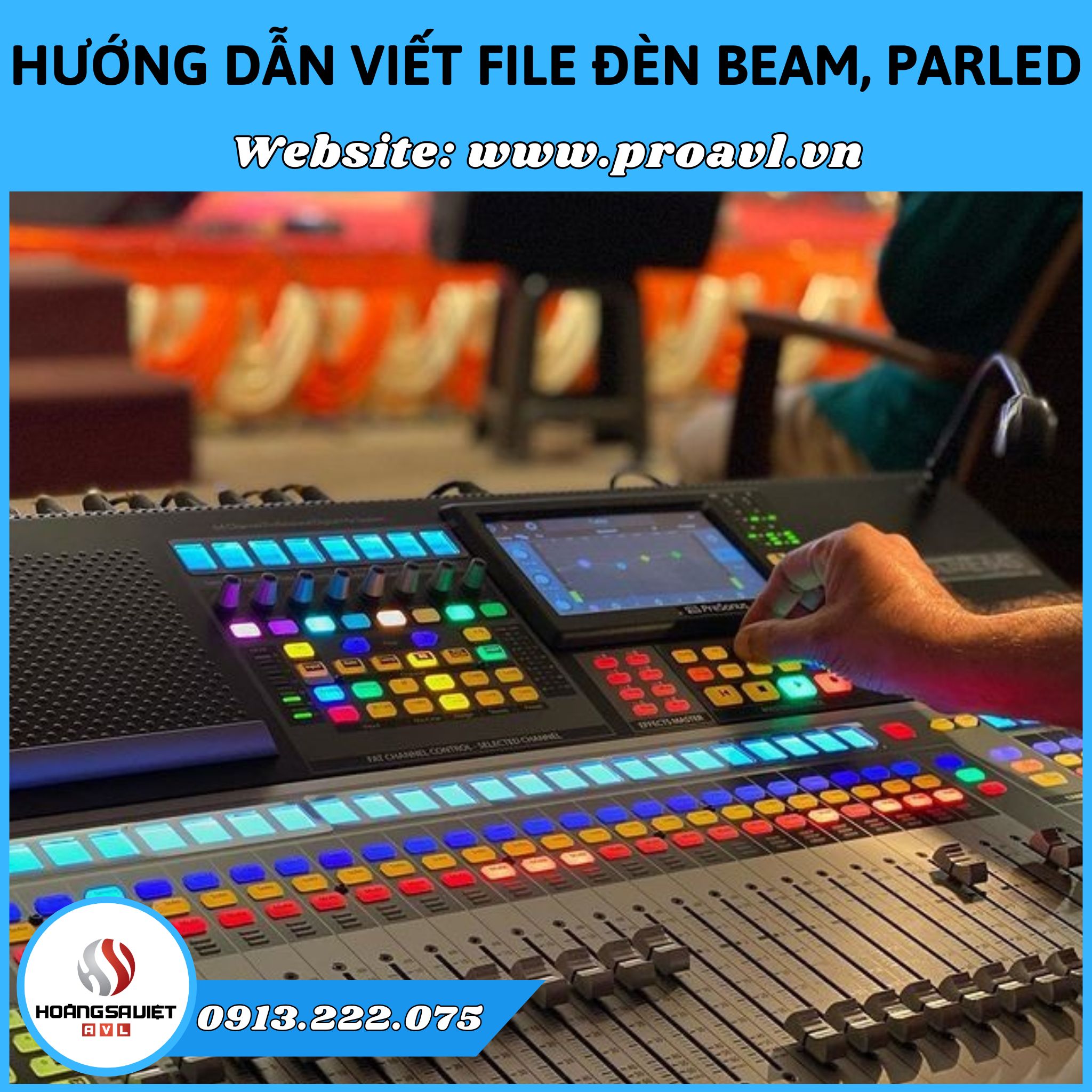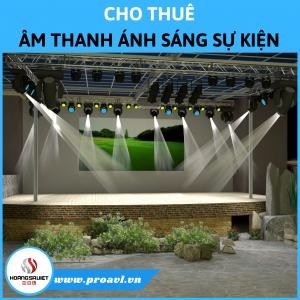The system is processing. Please wait a moment!
- Home page PRODUCT Hỗ Trợ Kỹ Thuật HỖ TRỢ KỸ THUẬT ÁNH SÁNG
How to Write Beam and Parled Light Files | Detailed Instructions
Status: Stocking
- Instructions for writing beam light files
- Instructions for writing parled light file
Table of Contents
In the field of event organization and stage performance, controlling professional lighting systems is an extremely important factor. Beam lights and Parled lights are two popular types of lights that often appear in performances thanks to their ability to create powerful and vivid lighting effects. However, to make the most of these lights, you need to know how to write control files (also known as DMX files or profile files) suitable for lighting consoles or control software such as GrandMA, Sunlite, Daslight, etc.
In this article, we will guide you through the process of writing files for Beam and Parled lights – from understanding the specifications to the steps of building the control file.
1. What is a light control file?
A lamp control file (referred to as a "lamp file") is a set of programming information that helps the software or lighting console "understand" how to control each type of lamp. Each different type of lamp will have a different DMX channel structure (channel) - some have only a few channels, some have dozens of channels.
- Writing the correct lamp file helps you:
Automate lighting programming.
Avoid confusion between DMX channels.
Flexible in effect design.
2. Preparation steps before writing the lamp file
Step 1: Collect specifications (Manual DMX)
Most Beam and Par Led lights come with an instruction manual, which includes a DMX table that shows the functions for each channel. If you don't have a paper manual, you can find it on the manufacturer's website or scan the QR code on the light body.
For example, with a 9 channel RGB Led Par light, the DMX could be as follows:
| Channel | Function | Describe |
| 1 | Dimmer | Total brightness |
| 2 | Red | Adjust red color |
| 3 | Green | Green adjustment |
| 4 | Blue | Adjust blue color |
| 5 | White | Adjust white color |
| 6 | Strobe | Flicker |
| 7 | Auto programs | Automatic programs |
| 8 | Speed | Auto/strobe speed |
| 9 | Sound activation | Sound sensitive mode |
With Beam lights, the DMX board is usually more complex, including channels such as: Pan, Tilt, Dimmer, Color, Gobo, Prism, Focus, Frost, etc.
Step 2: Select the software or control device
You need to determine what you are using to write the file:
Software: Daslight, Sunlite, GrandMA2/3, Avolites Titan, Onyx (Obsidian), Lightkey, etc.
Physical equipment: DMX table, control table with support for creating or importing fixture files.
Each platform has a different way of writing files, but they are all based on the general principle of mapping each function to each DMX channel.
3. Basic instructions for writing Par Led light files
Step 1: Create new fixture
In software like Daslight or Sunlite, open “ScanLibrary” or “Fixture Builder” to create a new fixture. Give it a clear name: “Parled 9CH RGBW”.
Step 2: Add DMX channels
Based on the DMX table, you add channels:
Channel 1: Dimmer → select “Master Dimmer” function
Channel 2–5: Red/Green/Blue/White → assign to each corresponding color
Channel 6: Strobe → select “Strobe” or “Shutter”
Channel 7: Auto Programs → “Macro” format
Channel 8: Speed → “Speed” or “Fade Time” format
Channel 9: Sound → select “Sound Mode” or note “Raw”
Step 3: Assign icons, set value ranges
For example, the Auto Programs channel might have bands:
0–10: Inactive
11–50: Program 1
51–100: Program 2
101–255: Program 3
You can enter these values for easy manipulation when programming the light later.
4. Instructions for writing specialized Beam light files
Step 1: Analyze the Beam light DMX board
Beam 230 lights typically have 16–20 channels. For example:
| Channel | Function | Describe |
| 1 | Pan | Rotate horizontally |
| 2 | Tilt | Vertical rotation |
| 3 | Pan Fine | Fine-tune Pan |
| 4 | Tilt Fine | Tilt Adjustment |
| 5 | Speed | Head rotation speed |
| 6 | Dimmer | Brightness |
| 7 | Shutter | Turn on/off light |
| 8 | Color Wheel | Color wheel |
| 9 | Gobo | Shaping wheel |
| 10 | Prism | Prism effect |
| 11 | Prism Rotate | Rotate the prism |
| 12 | Focus | Focus |
| 13 | Frost | Blur |
| 14 | Strobe | Flicker |
| 15 | Reset | Reset device |
| 16 | Auto Run | Automatic mode |
Step 2: Write the file in the software
Similar to Parled, you create a new fixture and import each channel with the appropriate function type. Some notes:
For Pan/Tilt, select “Movement” or “XY Control”.
With Color/Gobo, you should assign an image if the software allows it, for quick identification.
Reset and Auto Run are usually in a specific DMX range (e.g. 240–255), which should be clearly noted.
5. Some important notes
Backup regularly: If you lose the light file, you will have to start over.
Live test: After writing, you should test directly with real lights to correct errors (wrong channel, reverse direction, missing effects...).
Note clearly: Name the file easily, distinguish by light model, channel number (for example: Beam 230-16CH, Par Led-RGBW-9CH).
Share with the community: If you write a standard lamp file, please share it to save effort for others. Many Vietnamese lighting forums regularly exchange lamp files for free.
Conclude
Writing Beam and Parled light files is an important skill for stage lighting technicians. It may be a bit complicated at first, but when you understand the principles of DMX and use the software proficiently, you will master the lighting system in a more professional, creative and flexible way. Hopefully the above article will help you step by step approach and create standard light files, effectively serving your performances and events.
Contact information
Hanoi: 0978.345.727
HCMC: 0913.222.075
Email: hsvavl@gmail.com
Hanoi Head Office: No. 229, Van Tri Street, Van Noi, Dong Anh, Hanoi
HCM City Head Office: 184/20 Le Dinh Can, Tan Tao, Binh Tan, HCM City
Hiện chưa có đánh giá nào về sản phẩm này!

















